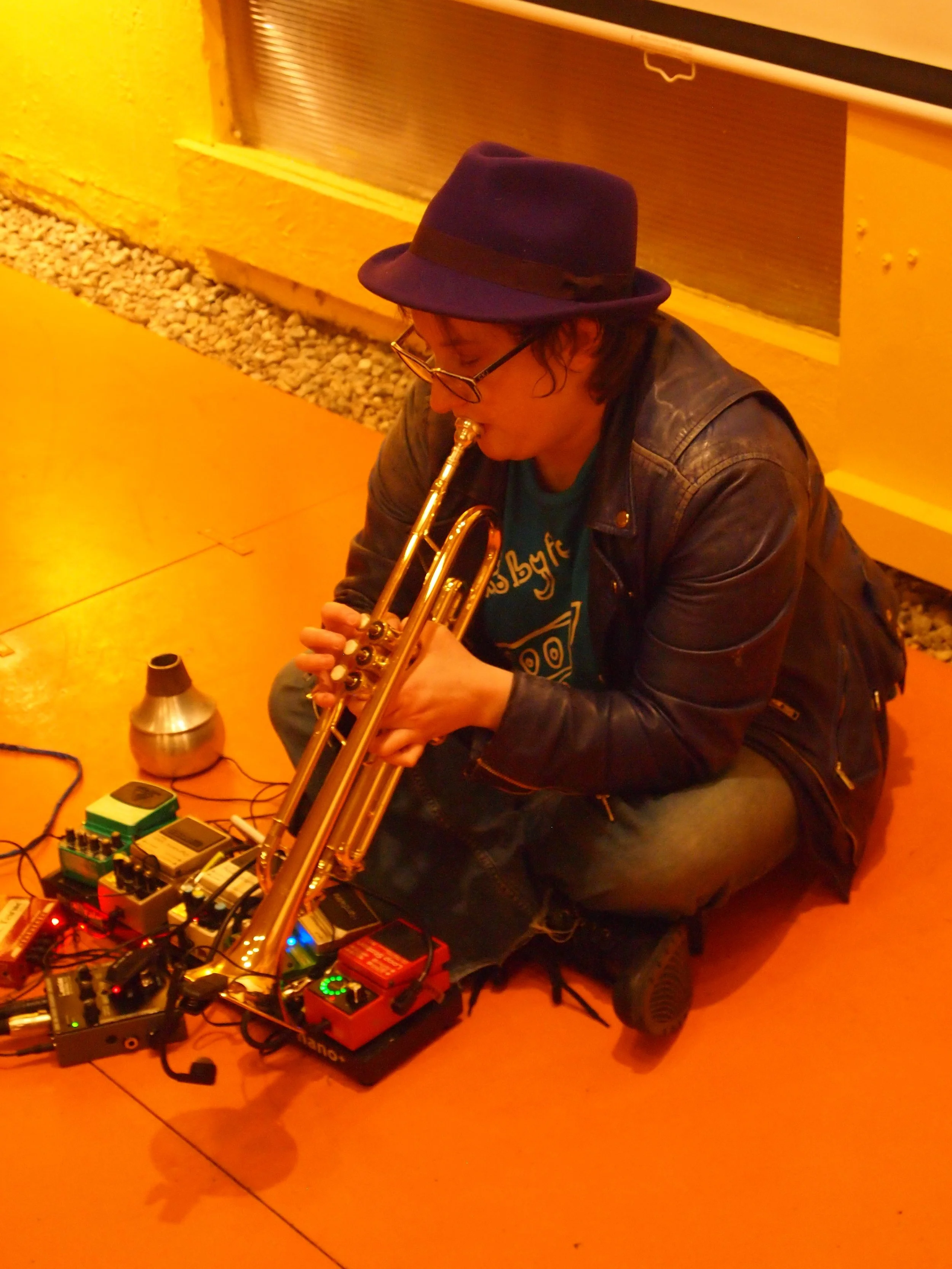Image: ‘Brick Lane 2021’ by Andrew Locke
In this blog, we hear from Mainspring Arts trustee Andrew Locke about the disparate worlds of fine art and art therapy, differing modes of creativity and art as personal transformation.
To begin a new blog, with what seemed like a very interesting and relevant experience that happened a few months ago…
I found myself attending a job interview for a front of house role at a prestigious contemporary art gallery in central London. The day had been planned with anxious anticipation, and this would take place in the afternoon after my art therapy session. The winter months had left me quite isolated, and with little confidence to start work. The role looked exciting, and even if - as I thought - it would be a vanity exercise, I was encouraged by friends and family to attend.
I explained about my art therapy role, which they appreciated was very rewarding for me, but obviously did not take to the idea of making art as therapy. They did however compliment me on my CV, and I came away feeling very positive about life. Attending was well worth it for this reason. It was really wonderful to reflect about the two ‘art’ environments I had been in that day, and the privilege I felt to have experienced these very different and almost opposing worlds, where the similarity is where art-making happens.
I think just that day I had made a real difference for someone in the art therapy group, and this was as valuable as the price tag on a painting. As I am starting to think, the hospital grounds feel as important a space for art as any gallery, with a depth and legacy I am now becoming more interested in.
I was also left a bit confused because I have here some contradictory paradigms about what art is about, and this is very much to do with abandoning ideas of pure aesthetics in place of explorations in healing, insight and self discovery. I felt like a bridge that day between very different worlds, and I am hoping to keep this experience in my mind as signification of a personal transformation, and also questions I have about differing modes of creativity.
Experience in the art therapy group has led to some insights about my own work, even things made decades ago, and what it was I was doing without really being aware at the time. Insecurities about my current creative lull are leading me to think about a therapeutic element of my work and turning this into a foundation to work from. Sadness about the loss of creativity through periods of ill mental health seems to be brightened by this idea, for the time at least, but I am hoping there will be some new scope in the future.
Among many other things, I have been thinking about the current status of computer modelling technology, and I wondered - what if I could model with computers in the future all the work I would have made if I had never developed schizophrenia? This idea is very interesting, and suddenly one of my pictures on the wall created in 1996 became an entire new world, opening up to my own past with a profoundly new perspective, and insights into what was going on for me at the time.
This and some other reflections have led me to think about everything that exists to be thought of as worlds, and importantly a sense of equality that I think should be adopted here. I am hoping to develop this thinking. Also here is something that has the potential to change how I feel about my difficult past, through art, and this feels very promising for me.
A few months ago, for the first time, I applied for an artist’s residency with an organisation called Drake Music, who exist to promote music and disability with a connection to technology. Essentially enabling disabled people to create or perform music enabled with technology, they also include neurodiversity within what they do, and I expressed this in my application.
One thing that I think gained their interest was my comment on how I feel I had been isolated from electronic music production culture, and that my music comes from this removed but interesting and perhaps obscure origin. This actually feels very true for me - I developed inroads to music without the influence of peers, and indeed was never part of the social and cultural structures of genre-defined electronic music.
This points to themes of isolation that might even be apparent aesthetically in my ambient music. My presence within this culture is ‘ambient’ in a sense, and I wonder if there is a relationship with a sensibility of music. My unique journey into sound is something I would like to write about more, and I am thinking about an autobiographical project to embrace.
The artist’s residency potential has led to ideas about technology and mental illness, which in my life has actually already been facilitated. But I am wondering more broadly about how I would develop a project with these themes, moving forward from previous achievements. Indeed, if I am beginning to think of the personal therapeutic aspect to my work, this would be a very exciting route to explore, with personal questions about digital technology.
It also raises the issue of a perceived divide between physical and mental disability, which I do not believe are yet equated together, as much as they should be. Perhaps I could look at what the work I might have made would have been like using computer technology, or work some way towards that. It all feels very exciting.
I have just started a new job in an art gallery in visitor experience, and I am piecing together a music video for a short piece of music I made a few years ago. A few weeks ago I spent a day wandering around London with my camera, and I am planning more of these trips over the summer. I am also continuing my 5K run everyday, and the music I listen to whilst doing this takes on a whole new energy, it’s absolute bliss for me, melding mind and body actively.





















































